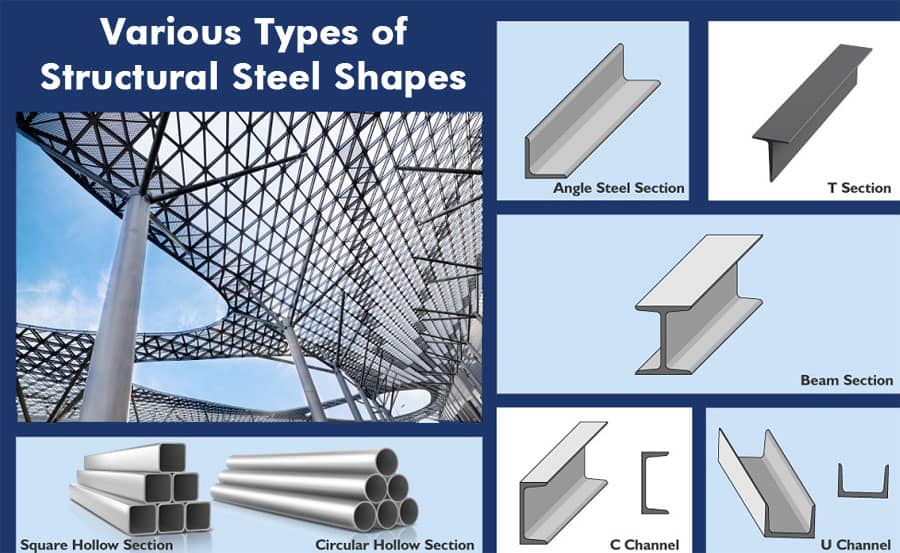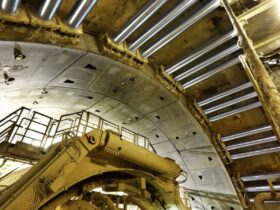In structural engineering, choosing the right components is crucial for the stability, durability, and efficiency of any project. Among the most commonly used structural elements are H-piles and T-beams. While both serve critical roles in construction, they differ significantly in design, application, and performance characteristics. Understanding these differences helps engineers make informed decisions tailored to specific project requirements.
What Are H-Piles?
H-piles are structural steel beams with an H-shaped cross-section. They are primarily used as deep foundation elements, driven into the ground to support large structures such as bridges, high-rise buildings, and marine docks. The design of H-piles allows them to bear heavy loads and resist bending, making them ideal for applications where load-bearing capacity and structural stability are paramount.
H-piles are typically manufactured from high-strength steel, providing excellent durability and resistance to environmental stressors. Their symmetrical shape enables uniform load distribution, reducing the risk of structural failure. Additionally, H-piles can be driven to significant depths, making them suitable for projects requiring deep foundations in challenging soil conditions.
What Are T-Beams?
T-beams, on the other hand, are structural elements with a T-shaped cross-section. They are commonly used in the construction of floors, bridges, and roofs, where they serve as load-bearing components. The horizontal part of the “T” (known as the flange) resists bending, while the vertical section (the web) handles shear stress.
T-beams are often made from reinforced concrete, although steel T-beams are also used in certain applications. Their design provides high bending resistance, making them effective for spanning large distances without requiring additional support. This feature makes T-beams particularly useful in bridge construction and large floor systems where minimizing support columns is desirable.
Key Differences Between H-Piles and T-Beams
-
Design and Shape:
The most apparent difference is their cross-sectional shape. H-piles have a symmetrical H-shape, while T-beams have an asymmetrical T-shape. This distinction influences their load distribution capabilities and structural behavior.
-
Primary Function:
H-piles are designed for deep foundation support, transferring loads from structures to deeper, more stable soil layers. In contrast, T-beams are used primarily for horizontal load-bearing applications, such as floors and bridges, where bending resistance is critical.
-
Material Composition:
H-piles are predominantly made from steel, offering high strength and flexibility for driving into the ground. T-beams are often constructed from reinforced concrete, although steel T-beams are used in some structural applications.
-
Load-Bearing Capacity:
While both elements are strong, H-piles excel in vertical load-bearing and axial load resistance due to their symmetrical design and depth penetration capabilities. T-beams, however, are optimized for resisting bending moments and shear forces in horizontal applications.
-
Installation Process:
H-piles require specialized equipment for driving them into the ground, which can be noisy and disruptive. T-beams, particularly those made from concrete, are typically cast in place or pre-fabricated and assembled on-site, offering more flexibility in construction methods.
Applications in Structural Engineering
H-piles are indispensable in projects where deep foundations are necessary. They are commonly used in:
- Bridge supports
- High-rise building foundations
- Marine structures
- Retaining walls
T-beams, with their superior bending resistance, are ideal for:
- Bridge decks
- Floor systems in commercial buildings
- Roof structures
- Parking garages
The Role of Modern Materials
Advancements in material science have enhanced the performance of both H-piles and T-beams. The integration of high-strength steel, composite materials, and innovative construction techniques has expanded their application range. Companies specializing in structural materials, such as tubes métalliques Stealth Pipe and Steel, play a crucial role in providing high-quality components that meet the demanding requirements of modern engineering projects.
Conclusion
Understanding the differences between H-piles and T-beams is essential for selecting the right structural elements for any construction project. While H-piles offer unparalleled support for deep foundations, T-beams excel in horizontal load-bearing applications. By leveraging the unique strengths of each, engineers can design structures that are not only safe and durable but also cost-effective and efficient.









